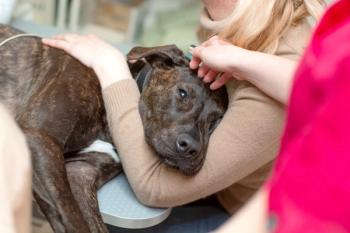
Using gabapentin to reduce feline stress
Administering the anticonvulsant drug can lead to calmer veterinary visits
Gabapentin has demonstrated benefit for calming cats during veterinary visits in several studies on the drug’s veterinary use. An anticonvulsant therapy, gabapentin is largely prescribed by veterinarians for managing pain, and controlling seizures in animals.1
The use of gabapentin was found to be a safe and effective treatment for cats for reducing stress and aggression in a 2017 study published in the Journal of American Veterinary Medical Association (JAVMA). Investigators from Europe and California had examined the drug as a possible key to successful veterinarian visits for felines.2
In a second study, published in a 2018 issue of Journal of Feline Medicine and Surgery, investigators in North Carolina concluded 50 mg or 100 mg gabapentin (9.2–47.6 mg/ kg per cat) reduces fear responses in confined community cats without measurable sedation over 3 hours post administration vs placebo.3
A third study, published in a 2021 issue of JAVMA, found oral administration of gabapentin to cats 2 hours before a veterinary visit can reduce fear-aggression behavior during a physical examination. This study set out to investigate the effect of giving a single dose of gabapentin for fear-based aggressive behaviors in cats during veterinary visits. The researchers compared a dose of either 100 or 200 mg/cat to placebo capsules 2 hours prior to the vet visit. Correlations between favorable outcomes were measured based on compliance scores. The compliance scores included a standardized 9-step protocol (measured 0-9 based on the highest step completed) and an ease of administration (scored 1[very difficult] to 4[very easy]).4
In the same study, the most commonly reported adverse effects include drowsiness, muscle relaxation and impaired balance/coordination. All adverse effects usually resolved within 10 hours or less upon initial observation. Furthermore, most owners reported that the capsules were simple to use and that any side effects were gone within 10 hours. However, in cats with kidney disease, these gabapentin doses should be used with caution.4
From the standpoint of animal welfare, there is still room for educating veterinarians and owners to use all appropriate methods available to help alleviate anxiety and fear associated with veterinary visits for cats. Gentle handling and carrier training are examples of such techniques, but they cannot always be implemented successfully without medication.
Roshica Dehaney is a 2023 PharmD candidate at the University of Connecticut School of Pharmacy in Storrs, CT.
References
- Ware E. Gabapentin for dogs, cats, and horses (foals). Wedgewood Pharmacy. July 13, 2022. Accessed April 13, 2023.
https://www.wedgewoodpharmacy.com/medications/gabapentin/ - van Haaften KA, Eichstadt Forsythe LR, Stelow EA, Bain MJ. Effects of a single preappointment dose of gabapentin on signs of stress in cats during transportation and veterinary examination. J Am Vet Med Assoc. 2017;251(10):1175–1181.
- Pankratz KE, Ferris KK, Griffith EH, Sherman BL. Use of single-dose oral gabapentin to attenuate fear responses in cage-trap confined community cats: a double-blind, placebo-controlled field trial. J Feline Med Surg. 2018;20(6):535-543. doi:10.1177/1098612X17719399
- Kruszka M, Graff E, Medam T, Masson S. Clinical evaluation of the effects of a single oral dose of gabapentin on fear-based aggressive behaviors in cats during veterinary examinations. J Am Vet Med Assoc. 2021;259(11):1285-1291. doi:10.2460/javma.20.06.0307
Newsletter
From exam room tips to practice management insights, get trusted veterinary news delivered straight to your inbox—subscribe to dvm360.




